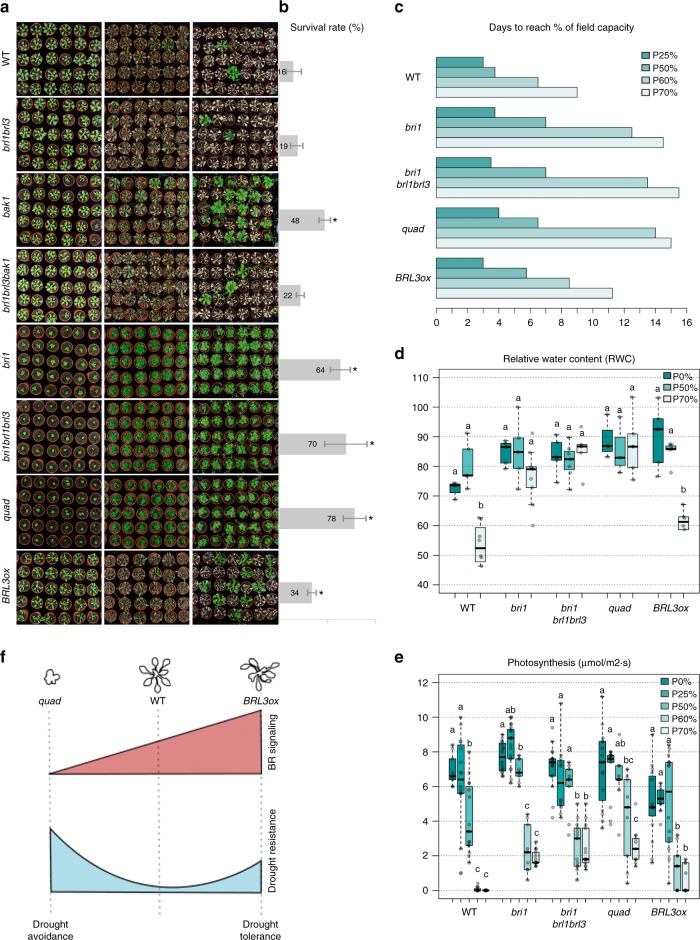Fig. 3.
BRL3 overexpression confers drought tolerance. a From top to bottom, 3-week-old plant rosette phenotypes of WT, brl1brl3, bak1, brl1brl3bak1, bri1, bri1brl1brl3, quad, and BRL3ox grown in well-watered conditions (left column), after 12 days of drought stress (middle column) and after 7 days of re-watering (right column). b Plant survival rates after 7 days of re-watering. Averages of five independent biological replicates ± s.e.m. (n > 140). Asterisk indicates a significant difference (p-value < 0.05) in a chi-squared test for survival ratios compared to WT. c Bar plot shows the days needed to reach different percentages of the soil field capacity for each genotype used in the study. d Relative water content (RWC) of mature rosettes at 0% (field capacity), 50% and 70% soil water loss. e Photosynthesis efficiency (µmol/m2*s) at different percentages of soil water loss. d, e Boxplot represent the median and interquartile range (IQR). Whiskers depict Q1 – 1.5*IQR and Q3 + 1.5*IQR and points experimental observations (n = 6). Different letters depict significant differences within each genotype in a one-way ANOVA plus a Tukey’s HSD test. f Schematic representation of BR signaling levels, adult plant size and drought resistance. Loss-of-function mutants passively avoid stress (drought avoidance), whereas plants with increased levels of BRL3 act actively to avoid drought stress (drought tolerance)

